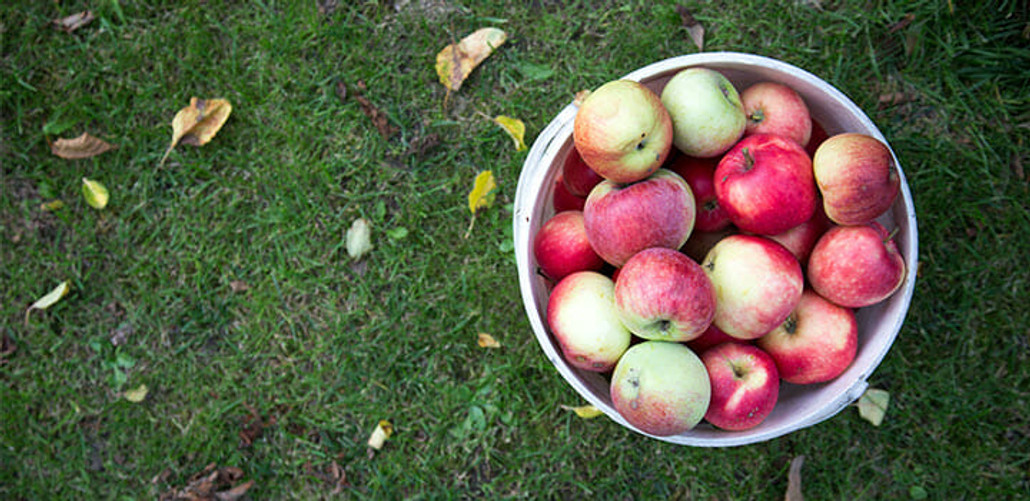
Growing Fruit Trees
Posted by Grange Co-op on 7th Feb 2018
Imagine biting into a homegrown juicy pear or apple. How about stepping into the backyard and picking fresh cherries or peaches during growing season? Efforts toward successfully growing fruit trees are worth the wait. Fruit trees generally take two to five years to reach a level of maturity that allows fruiting. It is wise to choose a location where your fruit tree will continue to flourish and grow years into the future. This GrangeKnows article will encourage you to plant your own fruit trees, as well as provide information on when and why it is important to fertilize your fruit trees.
WHEN DO I START?
Early Spring is the ideal time to plant a fruit tree, the abundance of rain water will only aid in the development of the tree. Additionally, cooler soil temperatures will encourage stronger root growth and less evaporation, which will allow them to adjust better.
TRANSPLANTING YOUR FRUIT TREES
Before transplanting, ensure the tree’s root system is well-watered and moist. Dig a hole large enough that the roots are not too confined. The proper size hole is about two times the size of the tree’s current root system. Allow plenty of room for the roots to spread out. Mixing
G&B Planting Compost with a half-and-half ratio of native soil from your newly dug hole is ideal for transplanting success. Work the soil down between the roots of the tree to avoid leaving any air pockets.  Fill soil and compost mixture up to the tree’s natural soil line. Once a tree is transplanted, it immediately gets to work restoring and generating new roots.
Fill soil and compost mixture up to the tree’s natural soil line. Once a tree is transplanted, it immediately gets to work restoring and generating new roots.
WATERING YOUR FRUIT TREES
In the earlier stages of a tree’s life, it solely focuses on developing leaves. It requires on average 10-40 leaves to sustain one fruit. Therefore, it is extremely important to water well, making sure the soil does not dry out. Keep in mind, most irrigation systems are set up for watering turf, shallow-rooted plants, and shrubs. Remember, if watering your tree with this method, generally additional watering will be necessary. Spring often brings plentiful amounts of rainfall, but make sure you are still checking soil conditions and extending watering sessions, if necessary. However, avoid overwatering to the extent the soil around your tree is soggy. In dry weather—depending on soil drainage and evaporation—water generously. This is typically every 7-10 days.
WHY SHOULD YOU FERTILIZE YOUR FRUIT TREES?
Not fertilizing your tree depletes nutrient reserves needed to support a bountiful crop. Fertilizing too much will produce lots of leaves and shoots, without producing a lot of fruit. Fertilizing the appropriate amount promotes a healthy system, especially during the tree’s formative years. We recommend
G&B Citrus Fruit Tree Fertilizer.
 This special blend is designed to feed fruit trees, including beneficial microbes to build life in the soil and support healthy plant growth. It is a slow release fertilizer and will feed for several months. When applying fertilizer ALWAYS follow label instructions. When using G&B Fruit Tree Fertilizer, simply sprinkle 1 ½ cups per 10 square feet for new plantings, mixing in the soil to maximize uptake.
This special blend is designed to feed fruit trees, including beneficial microbes to build life in the soil and support healthy plant growth. It is a slow release fertilizer and will feed for several months. When applying fertilizer ALWAYS follow label instructions. When using G&B Fruit Tree Fertilizer, simply sprinkle 1 ½ cups per 10 square feet for new plantings, mixing in the soil to maximize uptake.
Growing tasty fruits from home is quite an accomplishment. It’s important to fertilize your trees to help them achieve their purpose: producing bountiful crops for years to come! G&B Citrus Fruit Tree Fertilizer is specifically formulated to provide the micronutrient needs specific to fruit trees. We encourage you to try it out today and see the benefits to come. We welcome you to visit any of our Grange Gardening Experts for further information and help regarding fertilization and planting tips.
